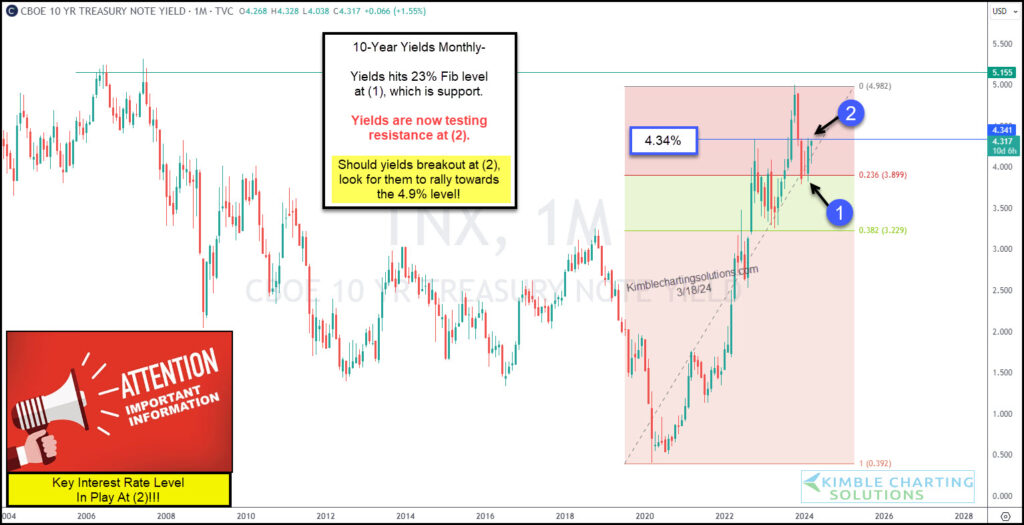The yields on treasury bonds are of immense interest and closely monitored by a broad spectrum of stakeholders, including banking institutions, individual consumers, and actively engaged investors. These yields serve as a fundamental benchmark for setting interest rates across various forms of borrowing, including but not limited to loans and on the outcome of bond auctions.
At the heart of the discussion today is the “monthly” performance chart of the 10-year treasury bond yield, which is undergoing analysis to discern potential trends in interest rate movements. Before diving into the specifics, it’s imperative to grasp the crucial role these bonds play in the economic landscape.
Treasury bonds, particularly those maturing over ten years, represent a government’s obligation to repay borrowed funds with interest. These instruments are pivotal for several reasons: they provide investors with a relatively safe avenue for investment, influence the overall interest rates in the economy, and serve as a gauge for the government’s borrowing costs. When the yield on these bonds increases, it echoes through the economy, pushing up interest rates on mortgages, personal loans, and auto financing. In essence, an uptick in the 10-year treasury bond yield indicates increased costs for borrowing money.
This correlation arises because the yield on these bonds acts as a benchmark for setting rates on most types of loans and credit facilities. Therefore, when yields climb, the domino effect on interest rates becomes tangible for both consumers and the broader economy. Conversely, the government encounters higher expenses for servicing its debt, as seen in elevated interest costs in treasury-bill auctions.
Given this backdrop, the analysis of the 10-year treasury bond yield chart acquires cardinal significance. The data reveals an intriguing pattern; the yield has recently rebounded from the 23.6 Fibonacci retracement level—a technical indicator often used by traders to predict potential price reversals or continuations. This rebound marks a pivotal moment, as the yield is now challenging a significant resistance point—the previous highs it had established.
This resistance level is a critical juncture; breaking through it could propel the yield to ascend towards the 4.9% mark. Such an outcome would have profound implications for the economy, potentially signaling a shift towards higher interest rates across the board. The prospect of breaching this resistance level brings us to an imperative contemplation—is it time yet again to be apprehensive about a surge in interest rates?
Understanding the significance of this moment requires delving into the intricacies of how bond yields influence economic dynamics. When the interest rates rise, the immediate impact is twofold: borrowing becomes more expensive for individuals and businesses, and consumers may reduce spending, affecting economic growth. However, on the flip side, higher interest rates can attract investors looking for better returns on investments such as savings accounts and fixed-income securities.
The narrative of the 10-year treasury bond yield is more than just numbers—it encapsulates the balance between sustaining economic growth and controlling inflation, ensuring that borrowing costs do not skyrocket to detrimental levels. Thus, the ongoing analysis of the yield’s performance is not merely an exercise in financial scrutiny but a necessary endeavor to forecast and prepare for the potential economic shifts that lie ahead.
In sum, the yield on the 10-year treasury bond is a barometer for the financial health of an economy, influencing a wide array of financial decisions and policies. As it teeters on the brink of breaking through a significant resistance level, all eyes will be on the potential impact on interest rates—a scenario that could redefine the cost of borrowing and spending behavior in times to come. Whether this signals a cause for concern requires careful monitoring of the yield’s trajectory in the ensuing months, keeping in mind the broader economic implications of these movements.



